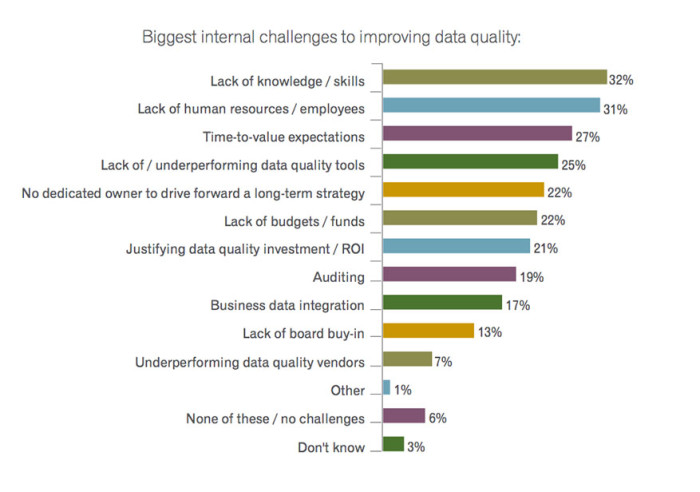Brands have become ever more successful at gathering quantities of data about their customer, the problem now is data management – how they leverage their data efficiently and effectively. Are they actually creating that elusive Single Customer View?
Researchers reckon there are 2.5 quintillion bytes of data created daily (that’s 2.5 followed by 18 zeros!) and the company holding the largest amount of data is Google – processing 3.5 billion requests per day – with Facebook, Microsoft and Amazon not far behind.
Other researchers estimate that today’s digital universe of data will rocket from 4.4 zettabytes to around 44 zettabytes (= 44 trillion gigabytes) in the next three years.
Back here on the ground, brands have become ever more successful at gathering quantities of data – information about their customers – the problem now is how they leverage it efficiently and effectively; retailers using their data to its fullest potential can increase their operating margins by 60 per cent, says Forbes.com.
It’s called Big Data because managing it is a big job! Data keeps shifting, multiplying. It has to be updated regularly – people die, move house, change job, change name, fall out with previously favourite retailers or suppliers, alter their habits and realign their preferences as they grow up, grow old, change their minds and their circumstances; as humans do.
The data that companies have from their customers must be permissioned and analysed into clusters and groups to enable a better customer service. Amazon.com, for example: when you view a potential purchase on Amazon, the site automatically mines its data to instantly display related products that people like you also bought – as my Kindle Books example shows.
In an ideal business world, all these myriad streams should be brought tidily together from their various departments – i.e from the shop floor, the payment method, the parcel delivery service, etc – into a centralisation strategy called the Single Customer View. Three simple words that hide a huge and highly personal task.
Annual research from Experian (The 2016 global data management benchmark report) shows how data can be managed to create the best possible insight into consumers – what they want and when they want it. But some organisations, while recognising the requirement, are a long way from achieving the Single Customer View, basically because they lack time and resources.
 Experian studied 1,200 companies across the UK, US, France, Germany, Spain and The Netherlands and found 75 per cent are losing potential revenue due to poor contact data, and 94 per cent think there is poor-quality data in-house.
Experian studied 1,200 companies across the UK, US, France, Germany, Spain and The Netherlands and found 75 per cent are losing potential revenue due to poor contact data, and 94 per cent think there is poor-quality data in-house.
Check out some of the report’s conclusions and recommendations in an infographic from Experian: Data management as a well-oiled machine: infographic
Other research also found marketers scratching their heads over the Single Customer View this year. A study from Amido said that while the joined-up approach among brands’ departments is clearly vital, they still find it beyond them.
 Alan Walsh (pictured), CEO of Amido, said: “Organisations see customer identity and creating a single customer view as a rich resource, but seem unsure about how to achieve this – even though they know that the lines between marketing and IT have blurred. Both the CIOs and CMOs need to realise that the solution is rarely a single product to answer to a complex enterprise-wide problem, meaning integration of technologies is inevitable.”
Alan Walsh (pictured), CEO of Amido, said: “Organisations see customer identity and creating a single customer view as a rich resource, but seem unsure about how to achieve this – even though they know that the lines between marketing and IT have blurred. Both the CIOs and CMOs need to realise that the solution is rarely a single product to answer to a complex enterprise-wide problem, meaning integration of technologies is inevitable.”
Data management and the 360-degree view of the customer
Chris Gray, director of technology at Amido, added: “Combining the expertise, knowledge and resources of technology and marketing departments will create a centre of excellence, one that utilises machine learning, data warehousing and customer behaviour information from multiple sources. This all creates that holy grail, 360-degree view of the customer’s identity, which is the foundation needed for effective personalisation.
“The fact is, across all the sectors we spoke with, customer data is mainly owned by the marketing and commercial teams, but true customer identity resides in the data the customer is willing to share – and getting people to share information is a challenge. With Gartner predicting that by 2018, 50 per cent of IT and identity access management programmes will be focused on both enterprise and customer-facing infrastructures as the two spheres evolve into one, leaders need to start working towards joining up their information by collaborating their technology solutions.”
Further research among marketers in the US and UK by data analytics brand BlueVenn, found that 82% felt they did not have the knowledge or resources needed to bring together multiple data points and to create a truly 360° Single Customer View. In fact, many marketers are now giving up on the Single Customer View entirely, with one in ten researched by BlueVenn listing it as one of their ‘mythical beasts’, ie. a marketing concept they believe just isn’t practical in the real world.
Anthony Botibol, marketing director at BlueVenn, said: “Our research suggests that most marketers either don’t have the tools, the time or simply the skills necessary to access and utilise the data available to them.
“The result is a generation of marketers who often give up before they start on strategies such as the Single Customer View, when the tools to achieve them are readily available.” To help shed light on the subject, BlueVenn has brought out a new Mythical Beasts of Marketing storybook, available to download.









Leave your thoughts